Today’s Current Affairs: 20th March 2024 for UPSC IAS exams, State PSC exams, SSC CGL, State SSC, RRB, Railways, Banking Exam & IBPS, etc
Table of Contents
Barberton Greenstone Belt:
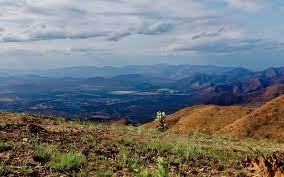
It is situated on the eastern edge of the Kaapvaal Craton in South Africa. It is known for its gold mineralisation and for its komatiites, an unusual type of ultramafic volcanic rock named after the Komati River that flows through the belt.
- Some of the oldest exposed rocks on Earth (greater than 3.6 Ga) are located in the Barberton Greenstone Belt of the Eswatini–Barberton areas, and these contain some of the oldest traces of life on Earth, second only to the Isua Greenstone Belt of Western Greenland.
- The Makhonjwa Mountains make up 40% of the Baberton belt.
- Ultramafic (or ultrabasic) rocks are dark-colored igneous and meta-igneous rocks that are rich in minerals containing magnesium and iron (“mafic” minerals) and have a relatively low content of silica.
Developing Countries Trading Scheme:
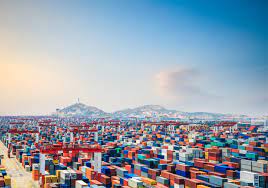
Exporters seeking to avail duty concessions on shipments to the UK will have to adhere to the new British rules under the Developing Countries Trading Scheme (DCTS).
- Developing Countries Trading Scheme (DCTS) is a scheme introduced by the UK Government to facilitate developing countries to integrate into the global economy, create stronger trade and investment partnerships and strengthen supply chains.
- It is a simpler and more generous preferential trading scheme which has been designed to boost trade with developing countries in order to support their development.
- It reduces or removes rates of duty, or tariffs, on imports from eligible developing countries into the UK.
- It also enables UK businesses to access thousands of products from around the globe at lower prices, reducing costs for UK consumers.
- The DCTS applies to 65 countries, that are:
- least developed countries (LDCs) as defined by the United Nations.
- low-income countries (LIC) and lower middle-income countries (LMIC) as defined by the World Bank.
- It will provide duty-free, quota-free trade to LDCs on everything but arms and duty-free, quota-free trade on 85% of eligible goods to most low LIC and LMIC countries.
- It does not extend to countries and territories deemed by the World Bank as ‘upper-middle income’ for three consecutive years, or to LICs and LMICs who have a free trade agreement (FTA) with the UK.
Peatlands : New Study

A new study finds that canals used to drain soggy peatlands in Southeast Asia are likely hotspots for greenhouse gas emissions.
- Peatlands are terrestrial wetland ecosystems in which waterlogged conditions prevent plant material from fully decomposing.
- Consequently, the production of organic matter exceeds its decomposition, which results in a net accumulation of peat.
- These occur in every climatic zone and continent and cover around 2.84% of the Earth’s terrestrial surface.
- The majority of the world’s peatlands occur in boreal and temperate parts of the Northern Hemisphere, especially, Europe, North America, and Russia, where they have formed under high precipitation-low temperature climatic regimes.
- About 84% of the world’s peatlands are considered to be in natural, or near-natural state.
- Drained peatlands make up about 16% of the world’s peatlands, or 0.5% of the Earth’s terrestrial surface.
- Due to the process of peat accumulation, peatlands are carbon rich ecosystems. Peatlands are the largest natural terrestrial carbon store.
- They store more carbon than all other vegetation types in the world combined.
- Damaged peatlands are a major source of greenhouse gas emissions, responsible for almost 5% of global anthropogenic CO2 emissions.
World Air Quality Report 2023:
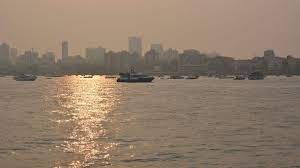
Delhi was identified as the capital city with the poorest air quality, according to a new report by World Air Quality Report 2023.
Highlights:
- With an average air annual particulate matter 2.5 (PM2.5) concentration of 54.4 micrograms per cubic metre, India had the third worst air quality.
- India was better than only two of its neighbouring countries, Bangladesh and Pakistan.
- While Bangladesh remained the most polluted country in the world, with an average PM2.5 concentration of 79.9 micrograms per cubic metre, Pakistan was second, with a level of 73.7.
- It also identified Delhi as the most polluted capital city in the world for the fourth consecutive time. Bihar’s Begusarai was termed the world’s most polluted metropolitan area.
- Ten out of the top 11 most polluted cities in the world are from India, the other being Lahore in Pakistan.
- 96 percent of the Indian population experiences PM2.5 levels more than seven times the WHO annual PM2.5 guideline.
Exercise Bharat Shakti:

A Tri-Services Live Fire and Manoeuvre Exercise named “Bharat Shakti” is being conducted in Pokhran, Rajasthan, demonstrating India’s indigenous defence capabilities.
- It included successful test firing of the long-range AGNI missile with advanced MIRV technology.
- Key equipment and weapons systems featured in the exercise include T-90 (IM) Tanks, Dhanush and Sarang Gun Systems, Akash Weapons Systems, Logistics Drones, Robotic Mules, Advanced Light Helicopters (ALH), Naval Anti-Ship Missiles, Light Combat Aircraft Tejas, Light Utility Helicopters, and Advanced Light Helicopters.
- However, the LCA Tejas fighter jet tragically crashed during a training exercise.
Agnipath Scheme : Passing Out Parade (POP) Of The Third Batch Of Agniveers
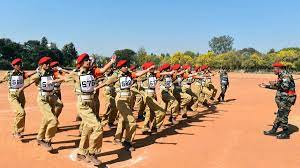
The Passing Out Parade (POP) of the third batch of Agniveers was held at INS Chilka, Odisha.
- Agniveers are a special group within the Indian Armed Forces, created under the Agnipath recruitment scheme.
- The Agnipath Scheme is a short-service manpower model introduced by the Indian government for recruiting soldiers across the Army, Navy, and Air Force.
- It is a transformative initiative under the Ministry of Defence.
- The scheme aims to provide an opportunity for patriotic and motivated youth to serve in the Armed Forces.
- It applies to personnel below officer ranks, excluding commissioned officers.
- Around 45,000 to 50,000 soldiers (referred to as “Agniveers”) are recruited annually under this scheme.
- These recruits serve on a short-term contract of four years.
- After the initial four years, only 25% of the batch will continue for an additional 15 years under permanent commission.
- Upon completing the four-year service, Agniveers receive a one-time “Seva Nidhi” package of Rs 11.71 lakhs, including accrued interest.
- They also enjoy a life insurance cover of Rs 48 lakhs during the service period.
- In case of death, the payout exceeds Rs 1 crore, including pay for the unserved tenure.
- The government assists in rehabilitating soldiers who leave the services after four years by providing skill certificates and bridge courses.
Exercise Tiger Triumph:
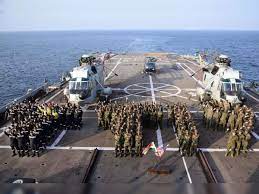
Exercise Tiger Triumph is scheduled on the Eastern Seaboard from 18 to 31 March 2024.
- Exercise Tiger Triumph is a bilateral tri-Service Humanitarian Assistance and Disaster Relief (HADR) Exercise between India and the US.
- It is aimed at developing interoperability for conducting HADR operations and refine Standard Operating Procedures (SOPs) to enable rapid and smooth coordination between forces of both countries.
- On completion of the Harbour Phase, the ships, with the troops embarked, would sail for the Sea Phase and undertake Maritime, Amphibious and HADR operations in accordance with injected situations.
- Indian Navy Ships with integral helicopters and landing crafts embarked, Indian Navy aircraft, Indian Army personnel and vehicles and Indian Air Force aircraft and helicopters along with the Rapid Action Medical Team (RAMT) would be participating in the exercise.
Pushpak : Reusable Launch Vehicle

ISRO plans to conduct the second landing test of the Reusable Launch Vehicle (RLV) Pushpak soon.
- This ongoing research and development aim to reduce space launch costs and advance India’s space exploration missions.
- In 2023, ISRO successfully conducted the Reusable Launch Vehicle Autonomous Landing Mission (RLV LEX).
- The Reusable Launch Vehicle (RLV) Pushpak is a winged technology demonstrator developed by the Indian Space Research Organisation (ISRO).
- Its purpose is to explore and validate technologies essential for achieving a fully reusable launch vehicle.
- The RLV Pushpak is part of ISRO’s efforts to develop a fully reusable launch vehicle.
- Its primary goal is to enable low-cost access to space.
- ISRO envisions building a space station by 2035, and the RLV technology plays a crucial role in achieving this objective.




